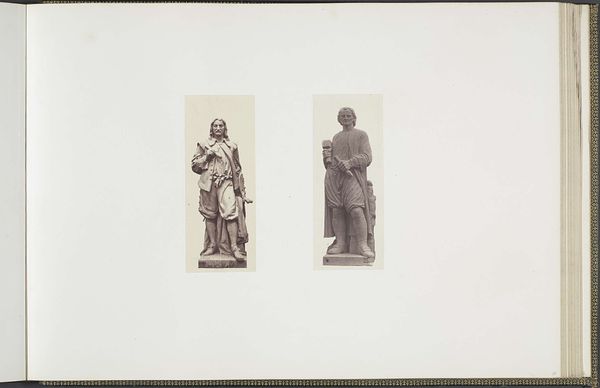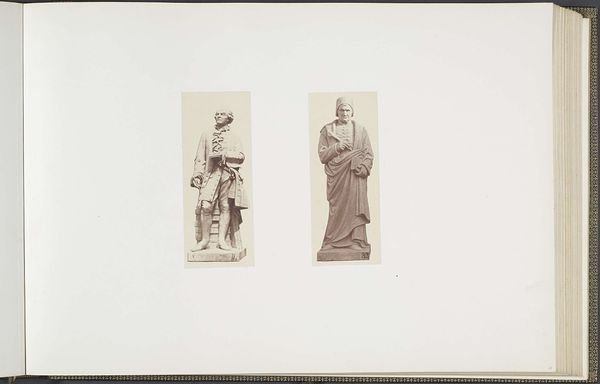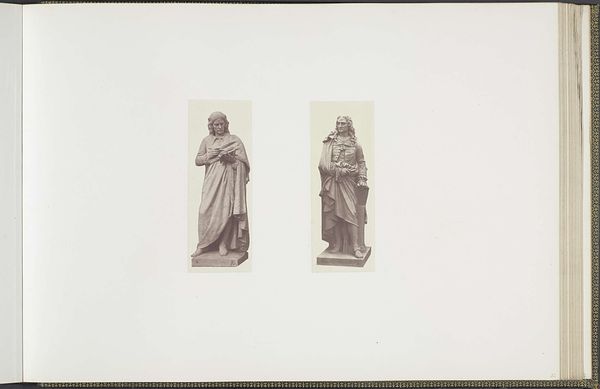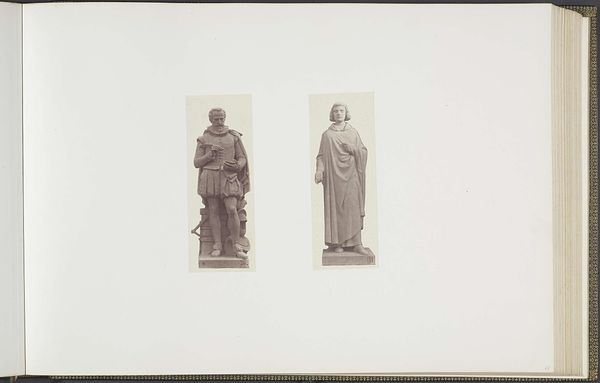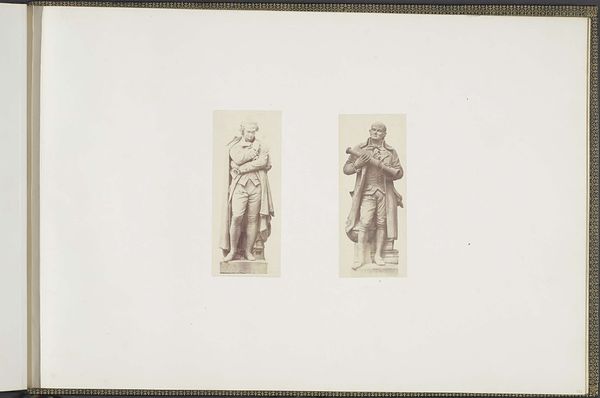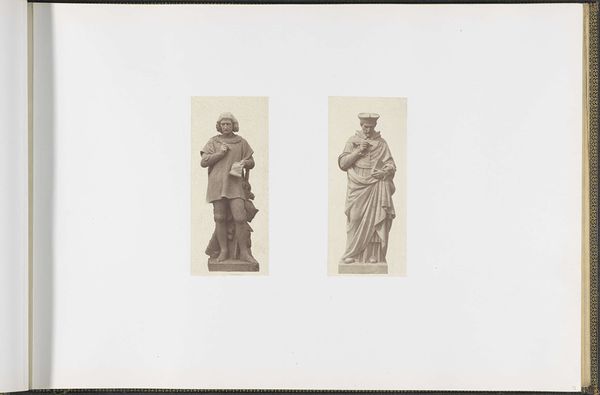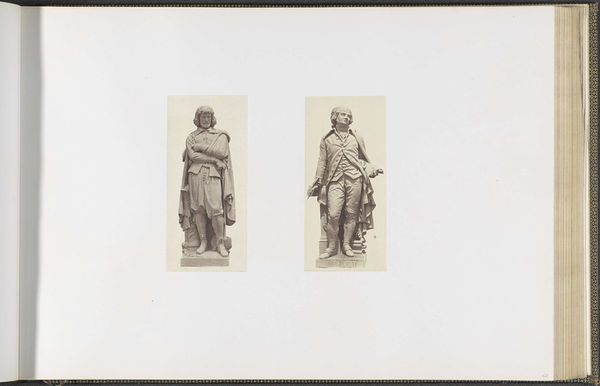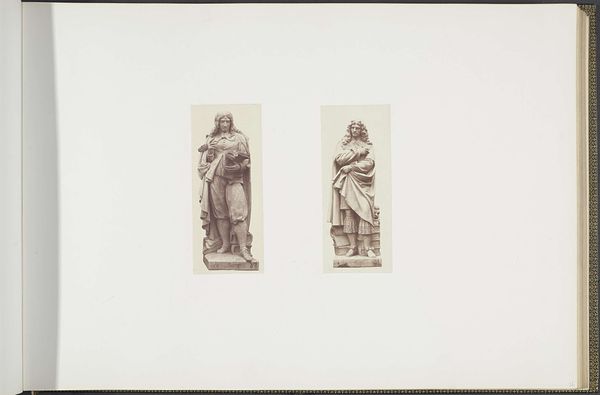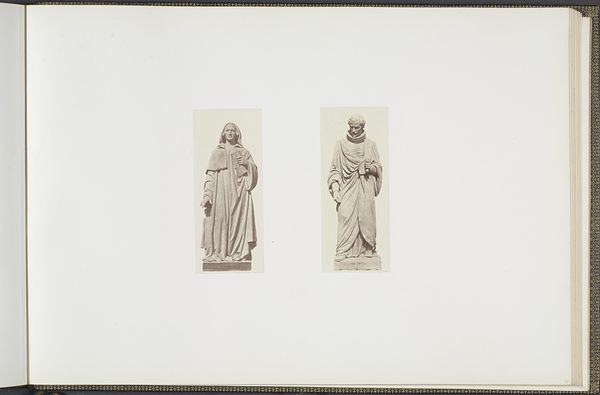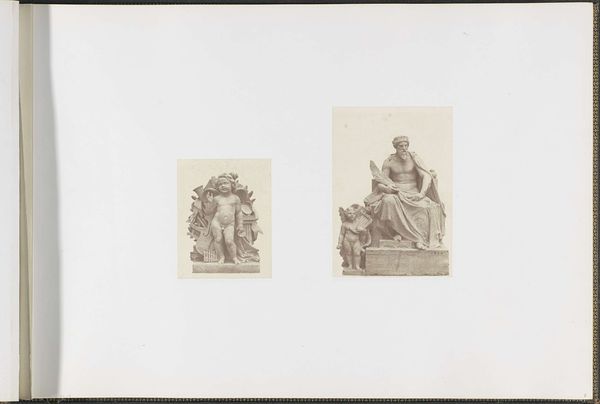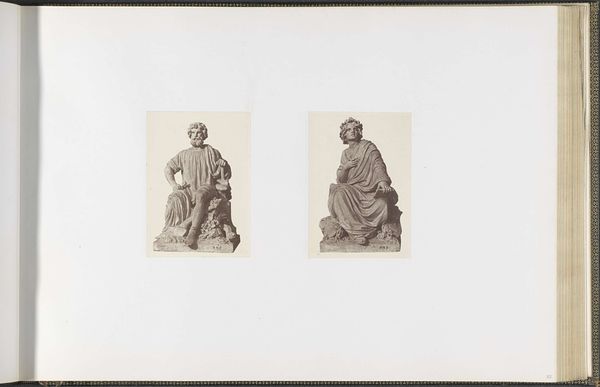
Gipsmodellen voor beeldhouwwerken op het Palais du Louvre: links "Saint Bernard" door François Jouffroy en rechts "La Bruyère" door Joseph Stanislas Lescorné c. 1855 - 1857
0:00
0:00
edouardbaldus
Rijksmuseum
print, photography, sculpture, gelatin-silver-print
#
portrait
# print
#
photography
#
sculpture
#
gelatin-silver-print
#
history-painting
#
academic-art
Dimensions: height 378 mm, width 556 mm
Copyright: Rijks Museum: Open Domain
Curator: This is a photograph by Edouard Baldus, taken between 1855 and 1857. The title translates to “Gypsum Models for Sculptures at the Palais du Louvre,” and it features the sculptures of Saint Bernard by François Jouffroy, and La Bruyère, by Joseph Stanislas Lescorné. Editor: My initial reaction is one of classical restraint. Despite being just a photographic print, it evokes the stoic nature often linked to historical sculptures, especially of significant public figures. Curator: Indeed. What makes this piece significant, I think, is the way Baldus documented the artistic process. He wasn't just capturing finished works but providing insight into the creation and display of art in the Louvre, which at the time was actively shaping its national image. Photography, at this time, plays a vital role in standardizing French national pride. Editor: You’re right, this perspective offers much to unpack. Seeing these sculptures side-by-side invites a symbolic reading. Saint Bernard raising his hand – an authoritative gesture, almost a blessing – while La Bruyère carries his weight like a burden. The image gives off a feeling of legacy and responsibility. Curator: Precisely. Saint Bernard was an influential theologian; La Bruyère, a moralist known for his critical observations of French society. Presenting them together speaks volumes about the values the Louvre wished to promote at the time, highlighting intellectual and religious authority. Baldus’ image functions not just as documentation, but an ideological statement about the leaders of France's past that continues to influence contemporary cultural attitudes and standards for greatness. Editor: The material adds another layer. These aren’t the final marble or bronze, but plaster models. They serve as reminders of the many creative stages involved. This intermediate form reveals more transparency and less perfection, exposing what’s being formed as national ideals. They almost appear incomplete and unrefined because of it. Curator: Ultimately, this gelatin-silver print does far more than simply document statues. It is indicative of how cultural institutions influence, and sometimes even create the socio-political ideologies we grapple with today. Editor: I appreciate how Baldus subtly encourages us to look beyond the surface. His snapshot makes you reconsider how symbolism operates in public imagery to this day.
Comments
No comments
Be the first to comment and join the conversation on the ultimate creative platform.
